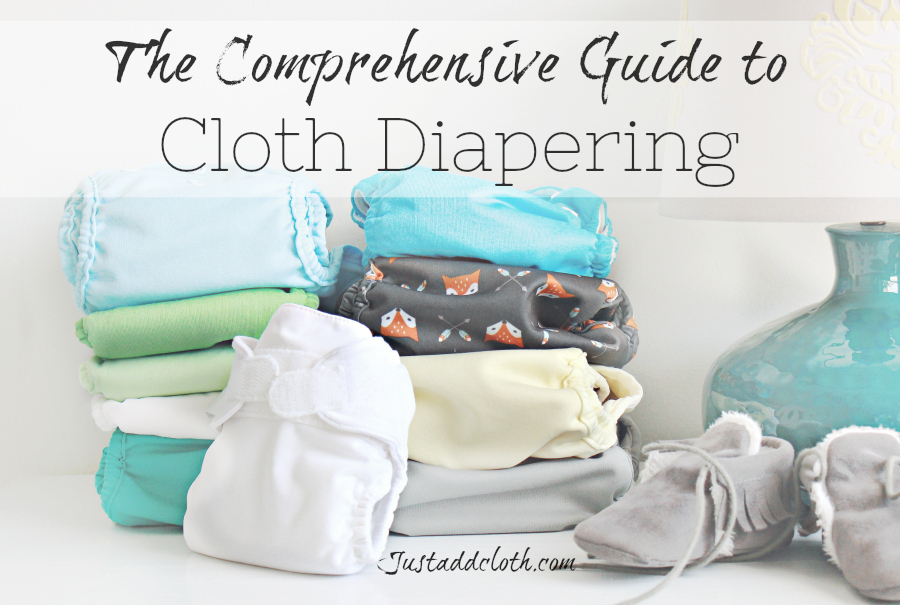
Cloth Diapering 101
Introduction and FAQs
So, you’re curious about a sustainable and eco-friendly diapering system, huh? I know, I know, there is a lot of information out there and a whole heck of a lot of opinions. Before we get started, I have one piece of advice that applies to all of your cloth diapering concerns, and parenting in general: keep it simple.
Page contains affiliate links.
>>>>Go to the Quick Guide to Cloth Diaper Laundry
>>>>>Browse the Cloth Diapering collection of articles
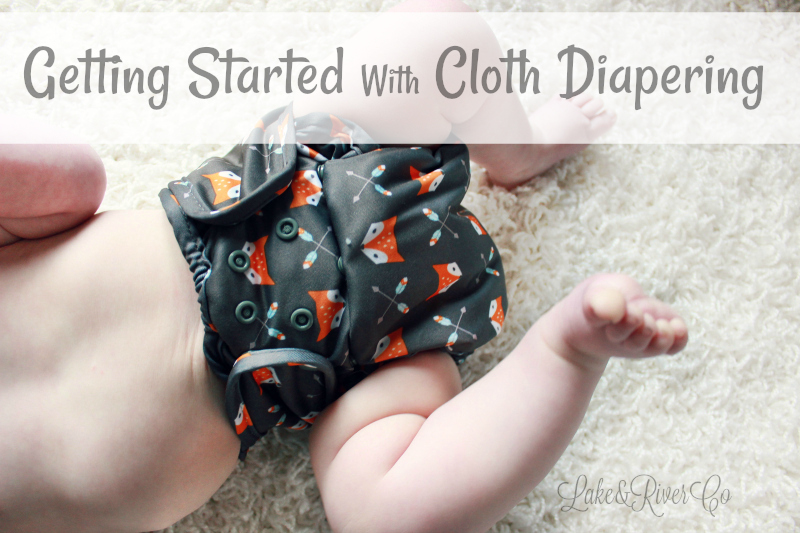
Ok, let’s get started. (Contains affiliate links)
First, you may have noticed lot’s of abbreviations and acronyms tossed around on forums, blogs, and other websites. You will eventually get the hang of them and perhaps make up your own someday when you are diaper guru guiding your friends through the cloth world. (Seriously, it can become addicting and suddenly you have a diaper blog and start annoying people with Facebook memes.)
Here are some of the common abbreviations and acronyms you may come across:
CD → Cloth Diaper
AIO→ All In One
AI2 → All In Two
PF → Prefolds
OBV→ Organic Bamboo Velour
H&L→ Hook and loop, I.e. velcro
OS → One Size
Since there are several types of modern cloth diapers, you may be confused over what is what.
It is overwhelming for the beginner. Pockets, pre-folds, fitteds, all-in-ones, all-in-twos, covers, hybrid systems: where to start?

Pocket Diapers
Pocket diapers are incredibly popular. They consist of a fleece inner lining(or similar stay-dry fabric), a water-proof PUL(polyurethane laminate) outer layer, and an insert for absorbency. Inserts can be purchased in a wide variety of materials, including hemp, bamboo, cotton, and various synthetic fibers. I have quite a few different brands, and no two are identical.
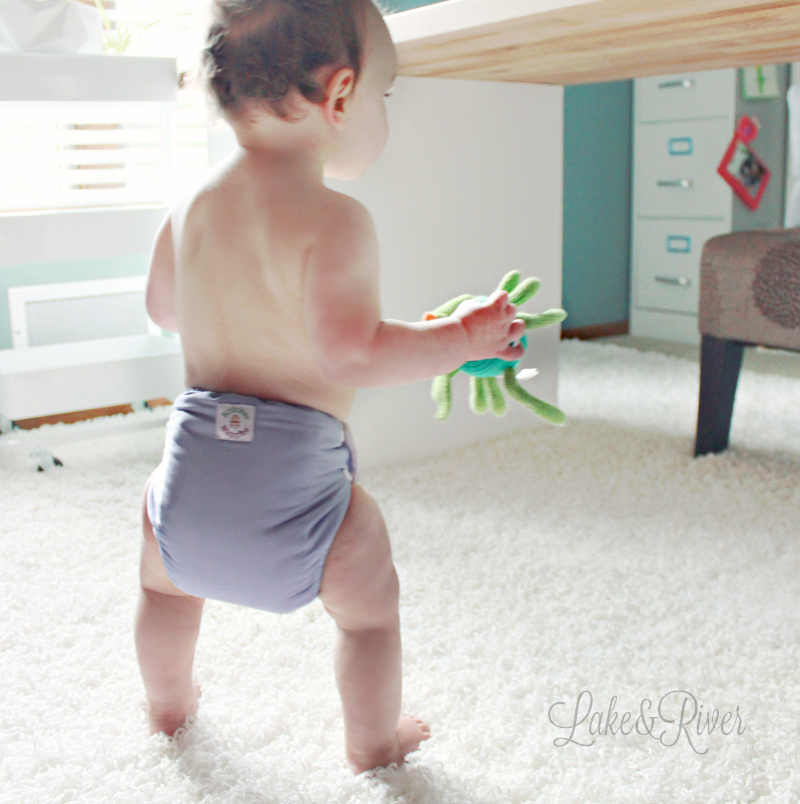
Fitteds
Fitted cloth diapers do not have a water proof PUL layer and must be worn with a cover. They consist of multiple layers of absorbent material such as cotton or bamboo and usually have some sort of elastic sewn into the leg openings. Fitteds usually can hold more liquid, and do very well containing solids since they have the leg gusset protection doubled with the leg gussets on whatever cover you use.
All-in-ones
All-in-Ones (AIOs) have a PUL layer like pocket dipes, but the absorbent layer/insert is attached or sewn in, making them all one piece. These are as simple as using a disposable. Some have a stuff-able pocket in addition to the absorbent layer. These are one of the easiest types of cloth diaper to use, but because the wet zone layer is attached, they can take a long time to dry.
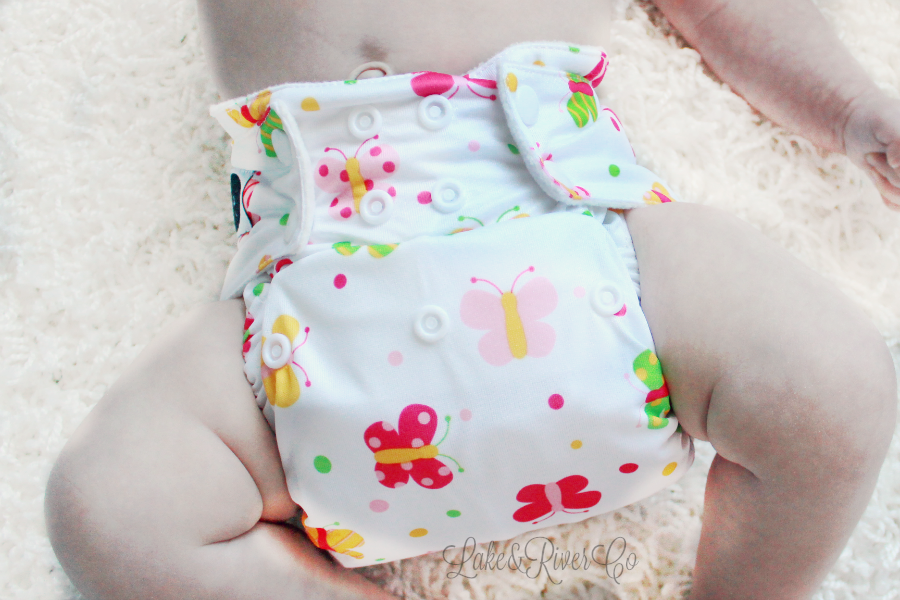
All-In-Twos
AI2s are like an AIO except they include a second piece. These diapers usually include a waterproof cover with an insert that can either lay in the cover, or snap to the cover. AI2s have become very popular since they do not require any folding or pocket stuffing.
Prefolds
Prefolds are probably the cheapest cloth diapering option on the market. These are the familiar cloth diapers you likely remember from years ago. They consist of absorbent material sewn into layers, with extra fabric in the center panel. They can be made from cotton, bamboo, or hemp. Birdseye is a common weave used in prefold fabric. Prefolds can be trifolded and layed in a cover, or there are a variety of different folds to try for the perfect fit for your baby. They are generally affixed with pins or a Snappi, or nothing if using a wrap style cover. All prefolds require a water proof cover.
How to Do a Jelly Roll Fold with Prefolds and Flats
8 Ways to Get Started Folding Your Flats & Prefold Cloth Diapers
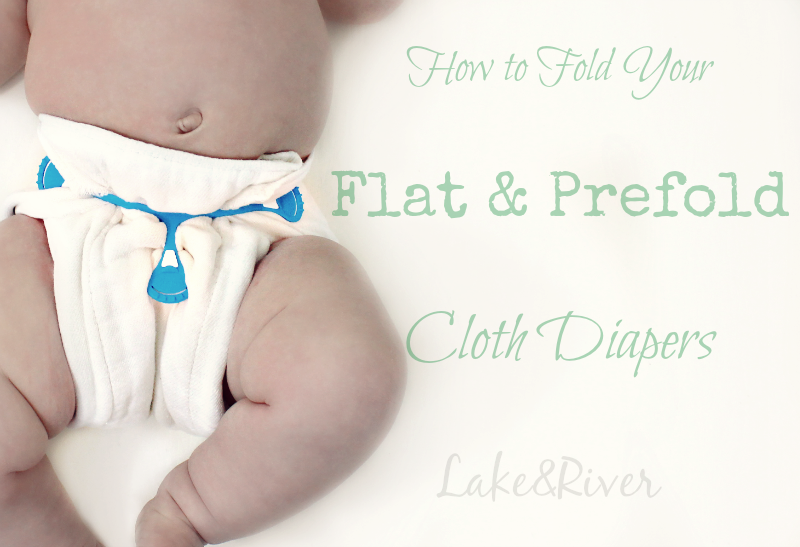
Flats
Flats are similar to prefolds accept they do not have the middle panel for extra absorbency. Flats are larger and can be folded to add extra padding to the wet zone.

Hybrid diapers are a combination style of cloth diaper. They often consist of a water proof cover made with PUL and some type of insert. Inserts can be cotton, stay-dry with the use of microfleece or microsuade, or even disposable(flushable) for on the go. Hybrids are often trimmer than other styles of cloth diapers and are popular for use during travel. Inserts can lay in the cover or some snap into place. Many brands can be interchangeable with different covers.
Ok, so now you know what is what. Let’s move on the hows!
How many cloth diapers do I need?
Overall, if you plan to wash diaper laundry every 2 days the following number of cloth diapers should be adequate.
- Newborn: 30-36
- Infant up to 6 months: 24-30
- Infant 6-12 months: 18-24
- Toddler 12 months+: 12-18
- Potty Learning: 6-10
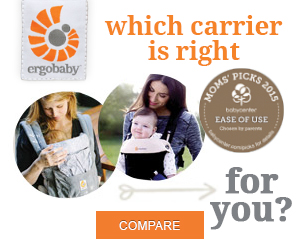
What types of cloth diapers should I use?
This one is all personal preference. Do you want the ease and convenience of disposables? You might prefer all-in-ones or all-in-twos. If you don’t mind stuffing pockets, then pocket diapers might work well for you. All-in-ones can take a long time to dry, so you will want to keep that in mind if you go with a small stash or decide to line dry. If you are comfortable going more old school and want to save money, flats or prefolds with covers are a good way to go. There are several videos online to show you how to do various folds, and covers come in a ton of colors and styles. Some people think they will prefer one kind of diaper and after trying out several types, they surprise themselves. Keep in mind your needs can change as well. Newborns and young infants need changing so often, velcro closures can be nice. But, as your baby grows and develops, he can learn to undo the velcro and you may find yourself switching your diapers to snaps instead. Or you may grow tired of stuffing pockets and want to simply trifold a prefold in a cover now and then. This is why some people prefer a variety in their diaper stash. Luckily, if you change your mind, cloth diapers have an excellent resale value.

Most people get away with about 36 wipes or even fewer
You basically want enough for three wipes per diaper, just in case of a very messy diaper change. However, this depends on your wipes and baby. A large terrycloth wipe can replace two or three flimsy flannel wipes. And some babies have more volatile eliminations than others.
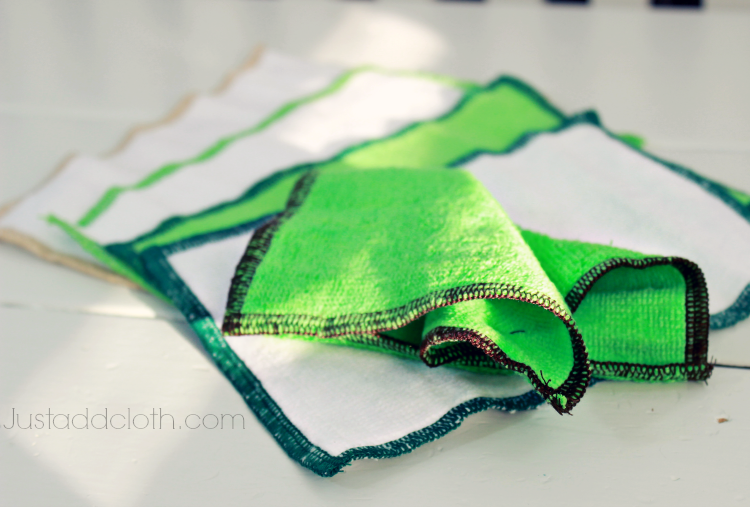
How do I moisten and use my cloth wipes?
This is another personal preference issue. Some people keep wipes dry and just wet them with water as needed. Others prefer a soap based wipe solution. You can pre-make your wipe solution and pour it over your wipes in a wipes container for one or two day’s worth of wipes, or you can keep your solution in a spray bottle and wet wipes as you need them. There are several wipe solution recipes online, and plenty of concentrated bottled solutions for purchasing at most cloth diaper stores and even some natural skin care shops.
Make your Own Wipe Solution Soap Bits

What other accessories do I need?
This depends on your cloth diapering strategy. Are you planning on full time cloth diapering? Or would you prefer using a mix so you can have disposables for outings and travel?
Some basics include:
- Wet bags for storage of soiled diapers
- Pail liners if you wish to use a diaper pail at home instead of a wet bag
- Snappis if you use prefolds or flats
- Cloth wipes
- Optional wipe solution
- Cloth safe rash creams as needed
- Liners if using non Cloth safe creams
There are a bunch of other accessories out there, but these are the basics.

No. But, some parents and caregivers LOVE sprayers. A diaper sprayer can be nice when you reach that sticky poop state with infants and toddlers. Some people stick with disposable liners and others will go with the dunk and swish method. You can purchase diaper sprayers to hook up to your toilet for $40-$60, but you can also make one for about $10.
What type of detergent do I use to wash cloth diapers?
This question has been debated for years. For the most part, manufacturers will tell you to use detergents free of brighteners, perfumes, dyes, and enzymes due to diapers being against your baby’s most delicate parts. Also, there are so many additives in detergents these days and you cannot always say what will react with the ammonia in urine. In general, go with a free and clear type of detergent with no fabric softener added. Powder works better in hard water. The type and amount of detergent that will work for you depends on how vigorous your machine agitates and whether or not you have hard water. Most of the “boutique” style of eco detergents will work best in soft water with a lot of agitation. Most of us need something a little stronger.

See the Washing cloth Diapers page for more.
General Washing:
Your washing routine will depend on the type of washer you have.
Preferably:
-Pre-rinse in cold water to remove any residual solids and excessive urine and ammonia.
-Hot or warm wash (not on sanitize) with a small amount of diaper friendly detergent.
(If your detergent is meant for cloth diapers, then use the amount directed. For regular detergents, the regular amount is fine unless you have very soft water. If you have an HE washing machine, use the recommended amount for your machine. It is better to need an extra rinse to remove all detergent, than to have less than clean diapers with a barnyard funk.)
-Warm rinse
-Followed by another rinse. Preferably cold.
For HE machines, an additional rinse may be needed. If there appear to be any suds at all remaining, your diapers need another rinse. Some people are able to trick their machines into using more water by putting a wet bath towel in with their diaper load.
-You may dry your diapers in the dryer on low heat. However, this will make the elastic wear out quicker.. Line drying your covers and Pocket diaper shells is preferred. Inserts can go in the dryer on any temp or line dry. If they feel stiff after line drying, placing them in the dryer for 10 minutes can soften and fluff them up. Again, do not use dryer sheets or bars with any of your cloth diapers.
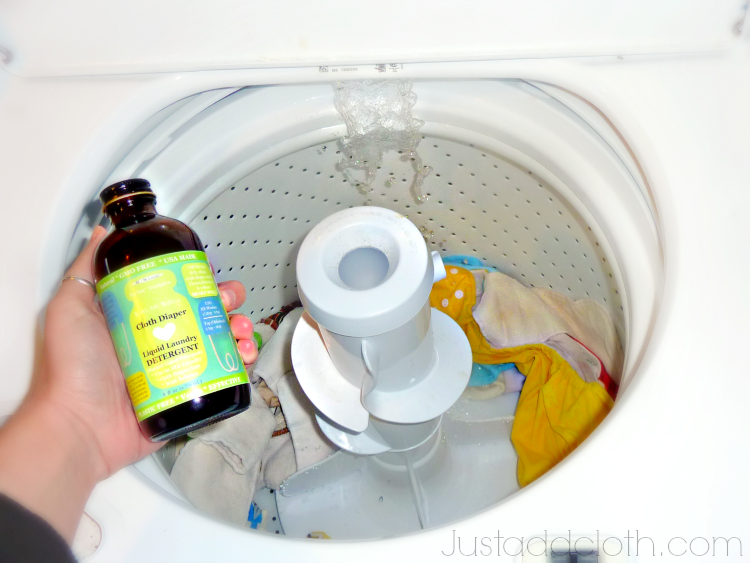
Can I use fabric softener, scents, or other laundry additives?
It is not recommended. Fabric softeners often add a lipid layer to fabric to create a false softness that can cause repelling, making your diapers leak. Scents and additives can react poorly with ammonia and minerals and cause issues. You can add a couple drops of certain essential oils to a cloth and place it in your dryer with diapers to lightly scent them. a few brands of softeners like Ecover and Ology are considered cloth safe.
How to Make Your Own Laundry Detergent
Can I use diaper rash cream?
Yes. Just be sure to check the ingredients on your creams. You want to stay away from fish oils and mineral oil, since these are difficult to rinse out and can cause repelling. When in doubt, use a liner or stick with coconut oil.
Diaper Rash Creams with Cloth Diapers
Can I use Prescription Magic Butt Paste with cloth diapers?
How To Strip Your Cloth Diapers
What about diaper liners?
Diaper liners work for some people and not for others. You can use cut up rectangles of thin fleece for a reusable liner, or you can buy disposable liners. Disposable liners can even be washed and reused another time if they were only wet upon, making them a fairly cheap option.
>>>>Go to the Quick Guide to Cloth Diaper Laundry
>>>>>Browse the Cloth Diapering collection of articles
*Any purchases made through affiliate links might result in a small compensation to our site. Thank you for your support.

